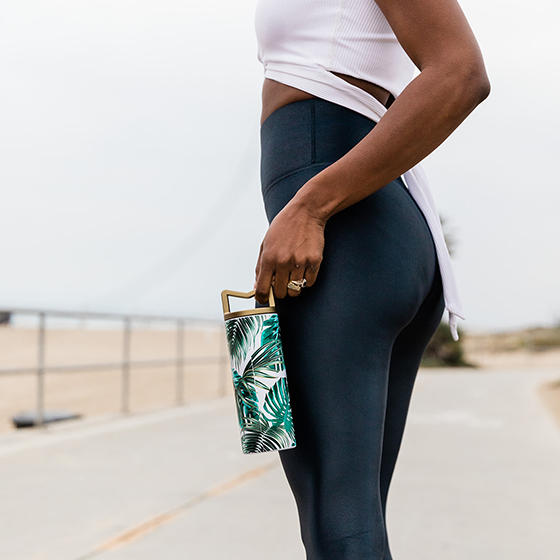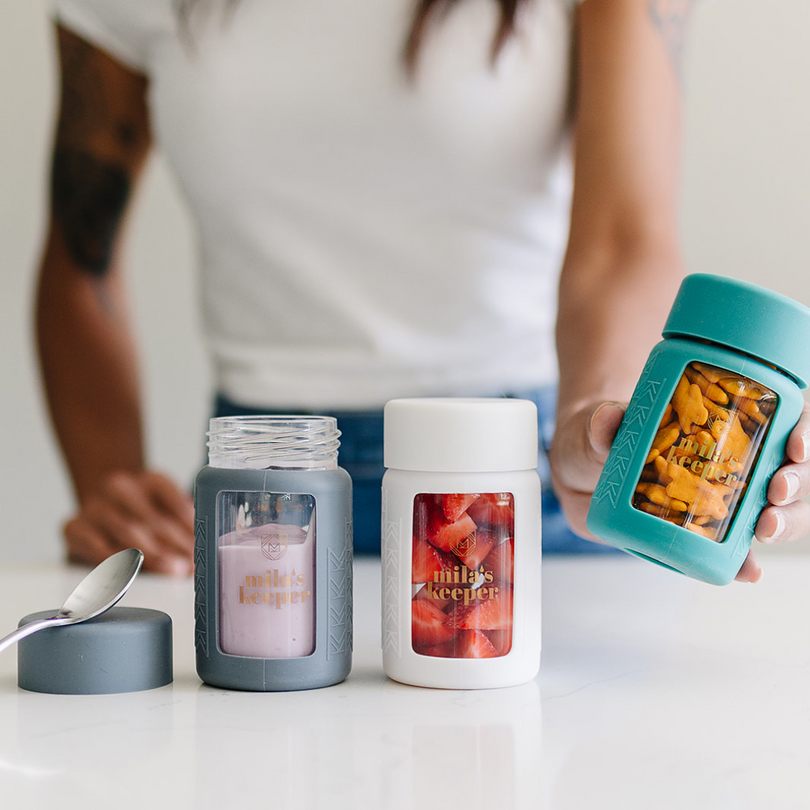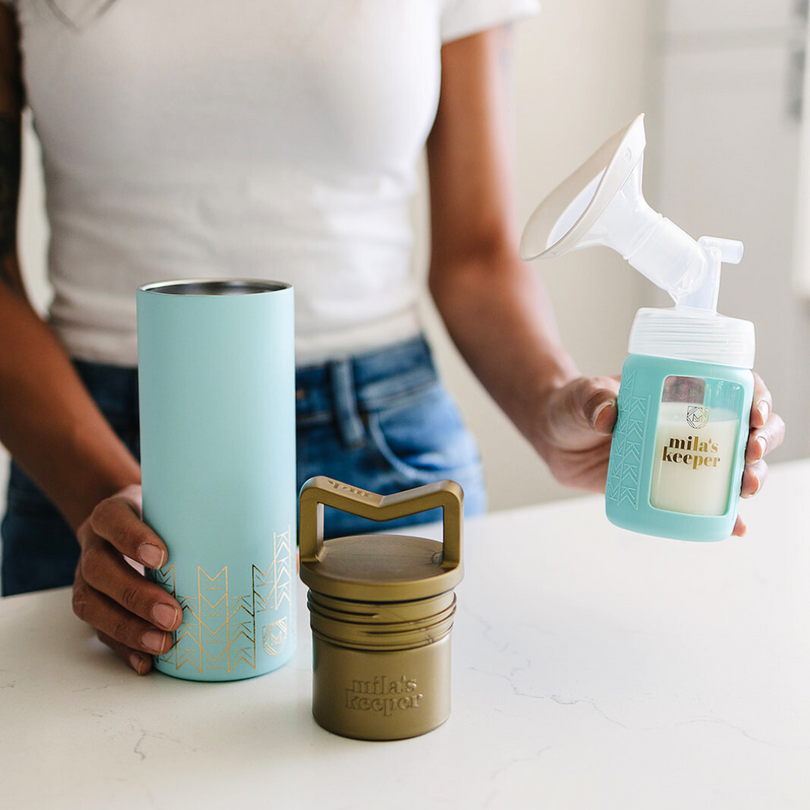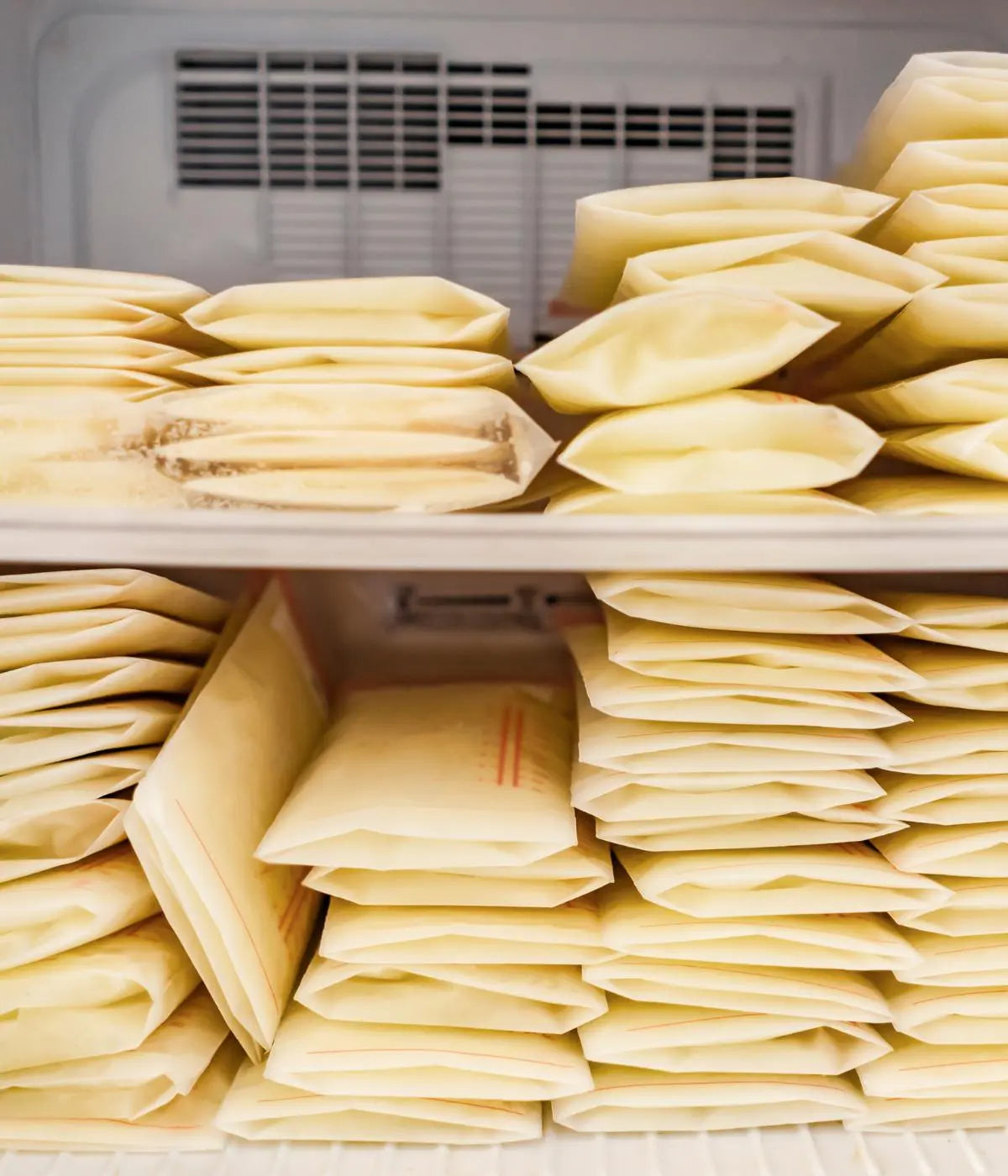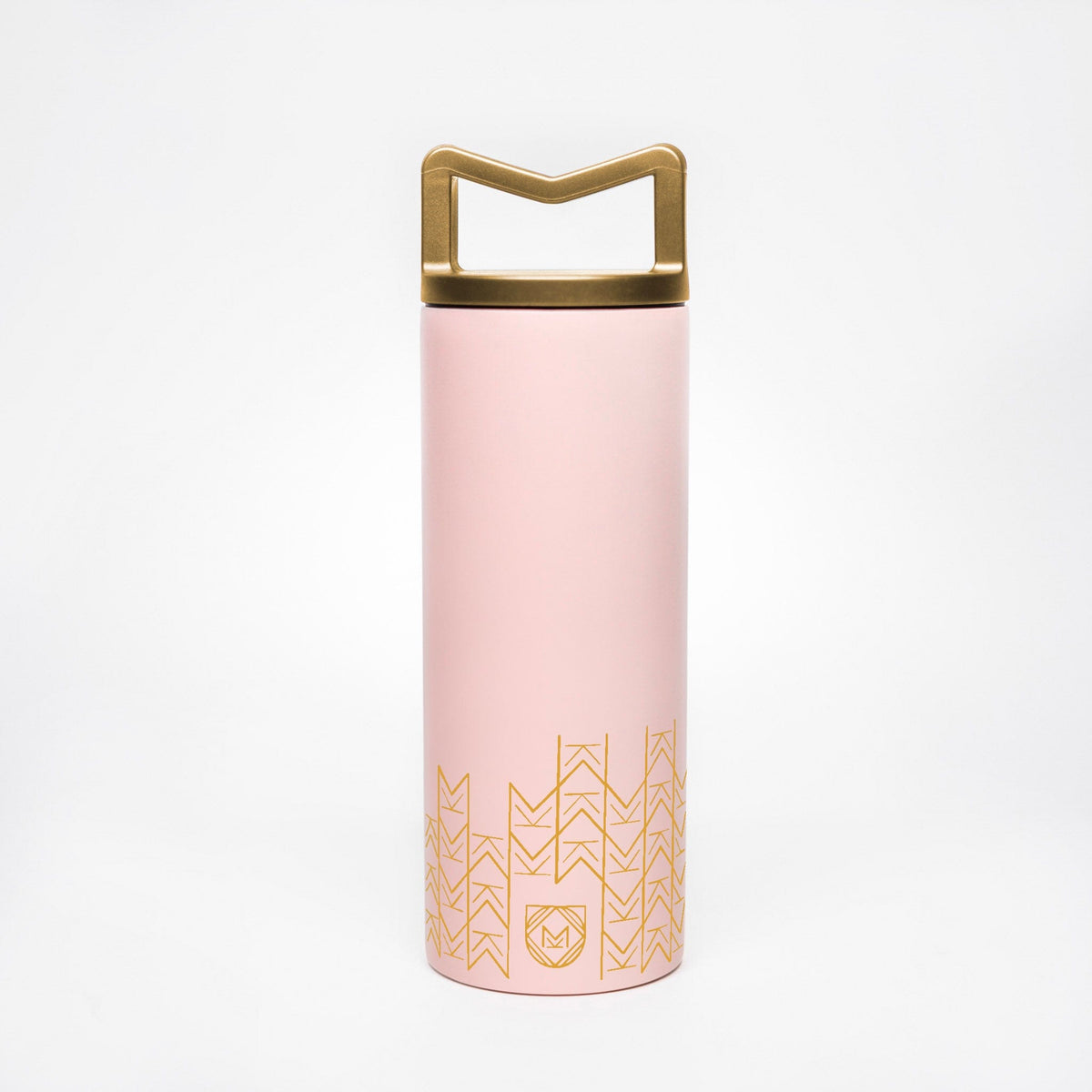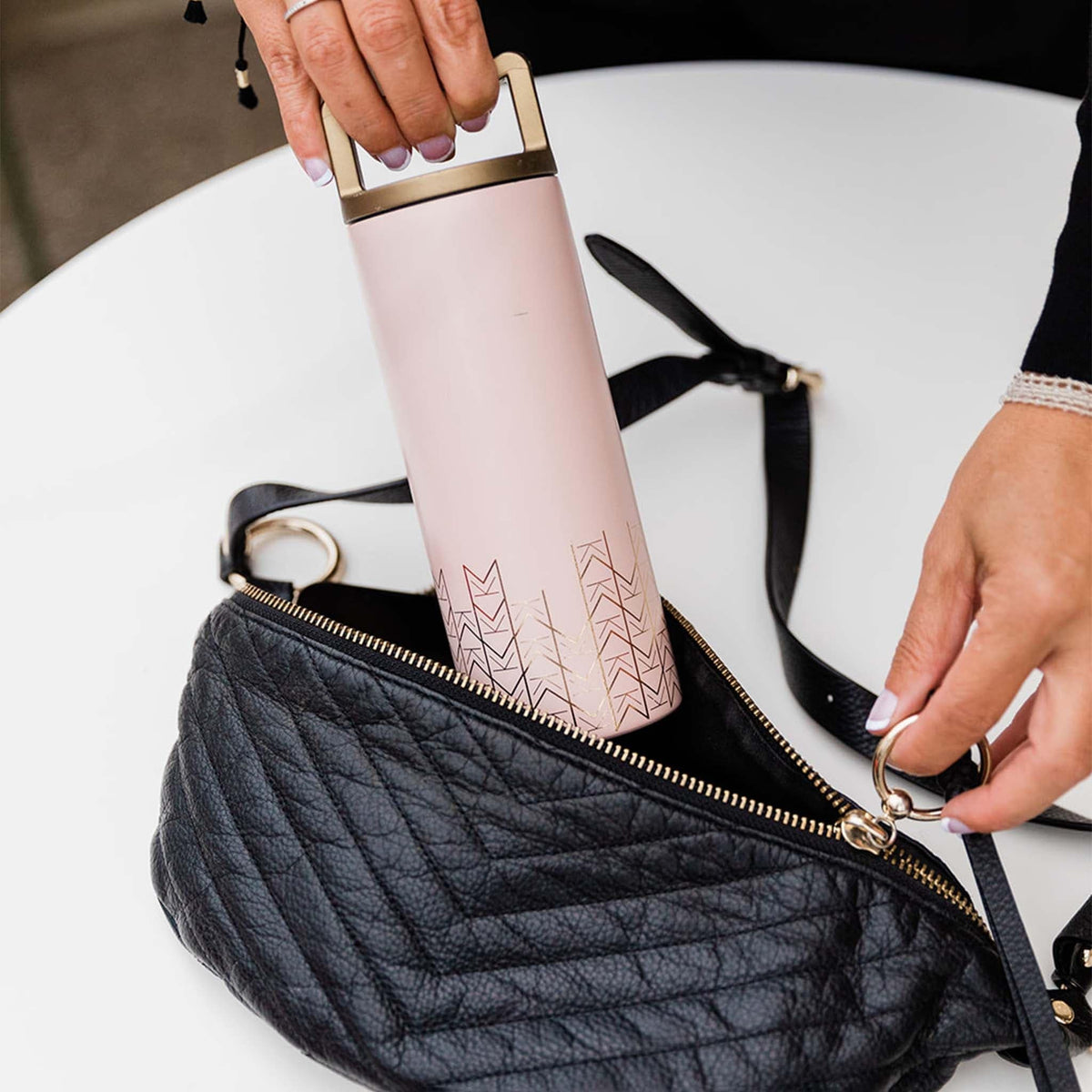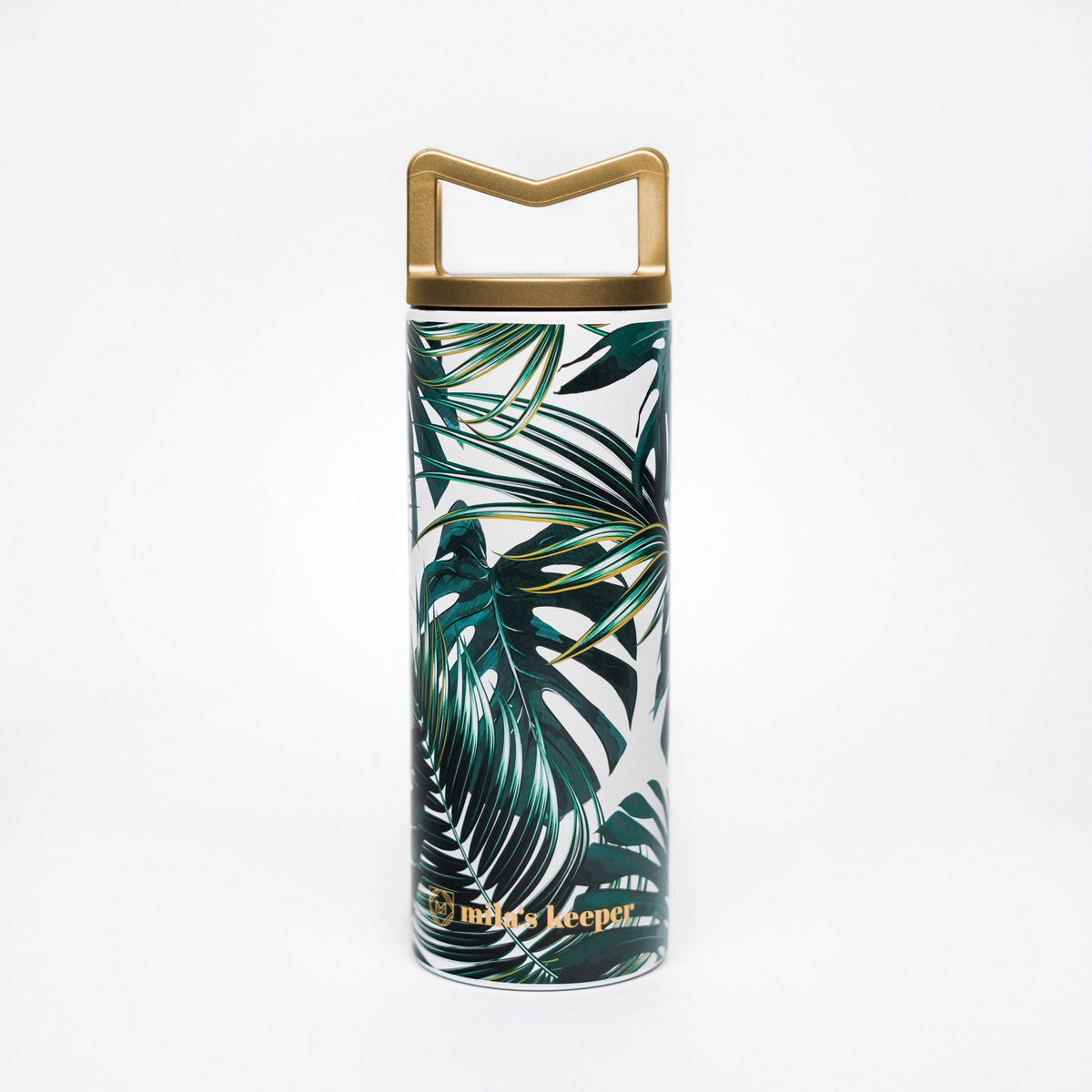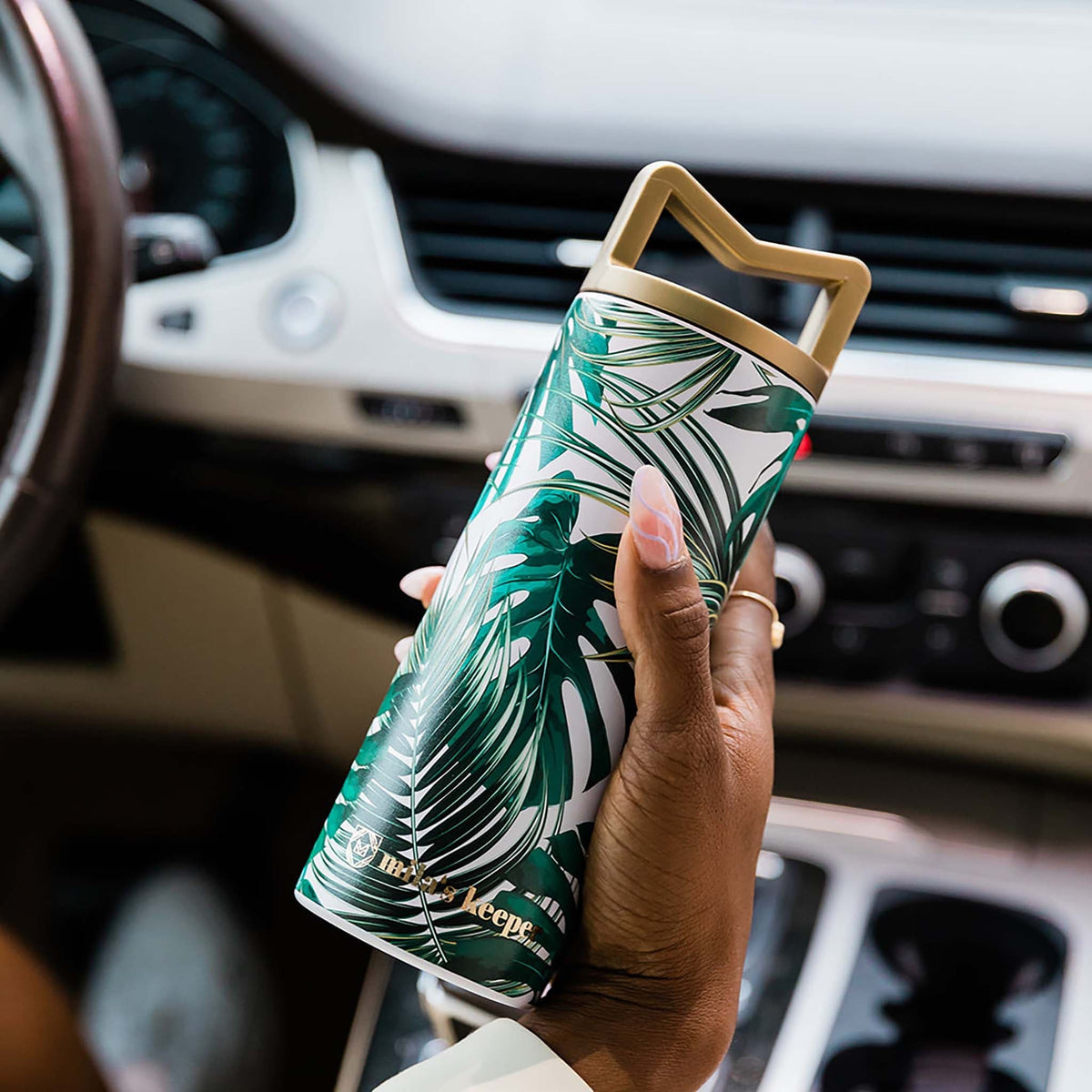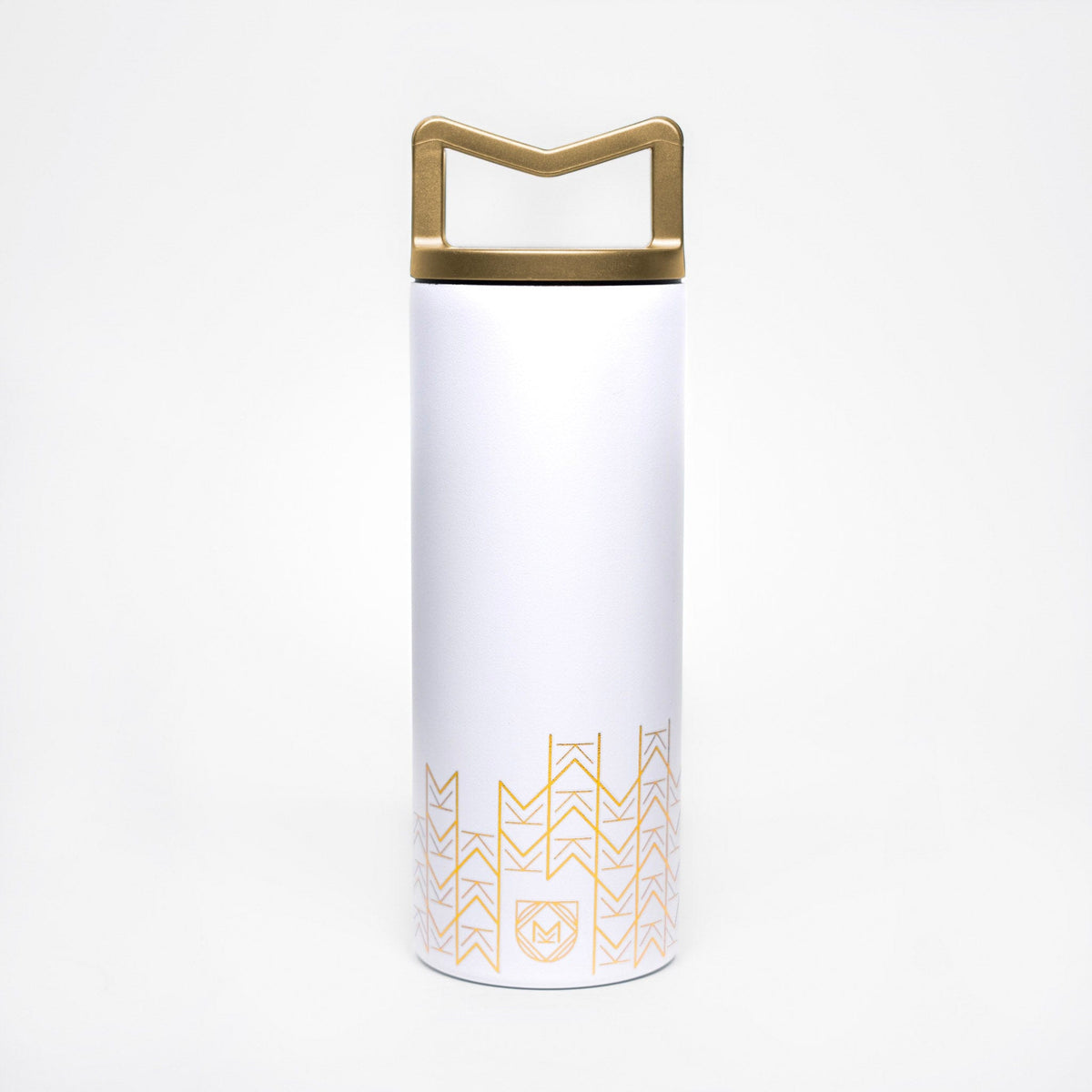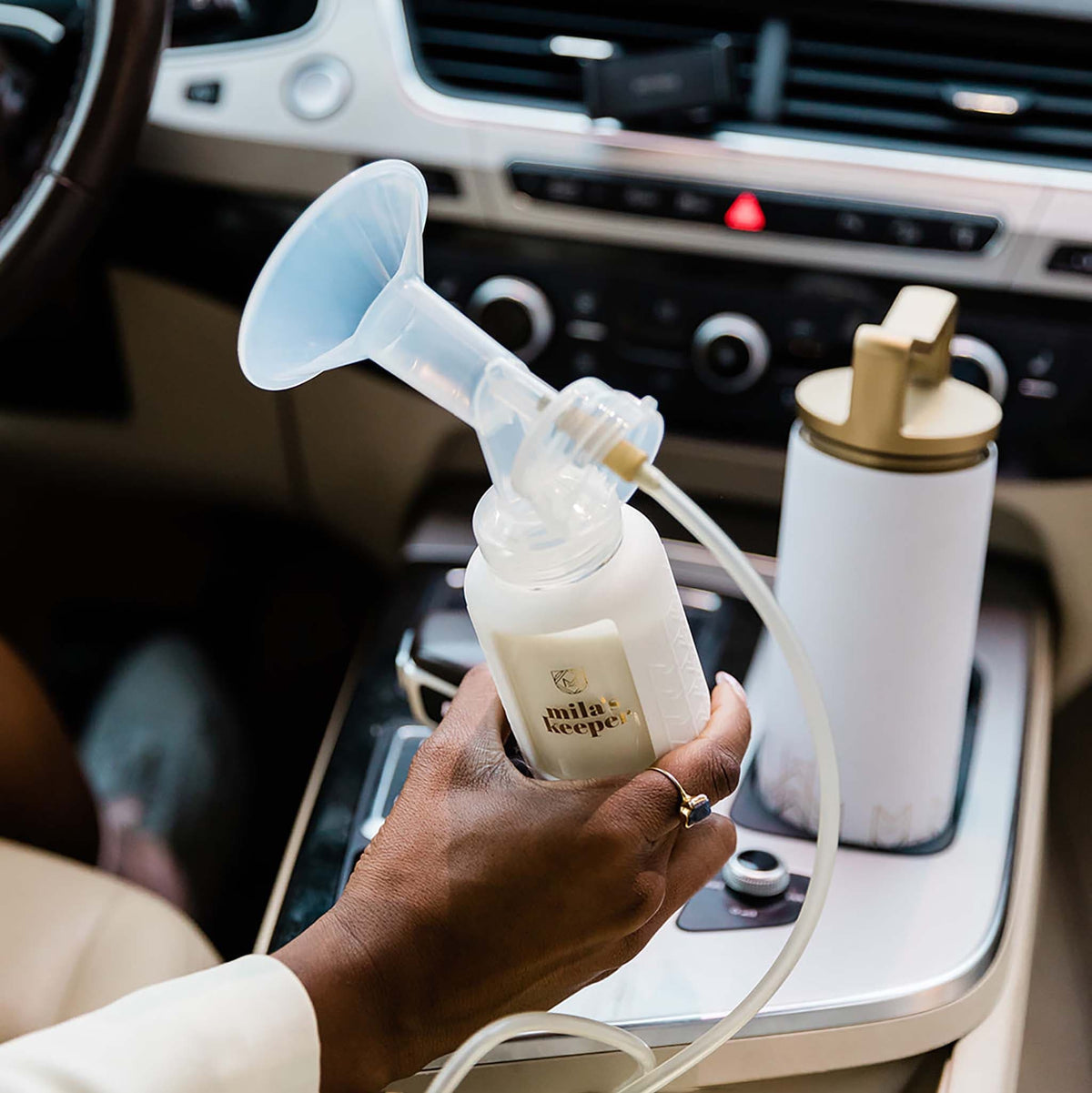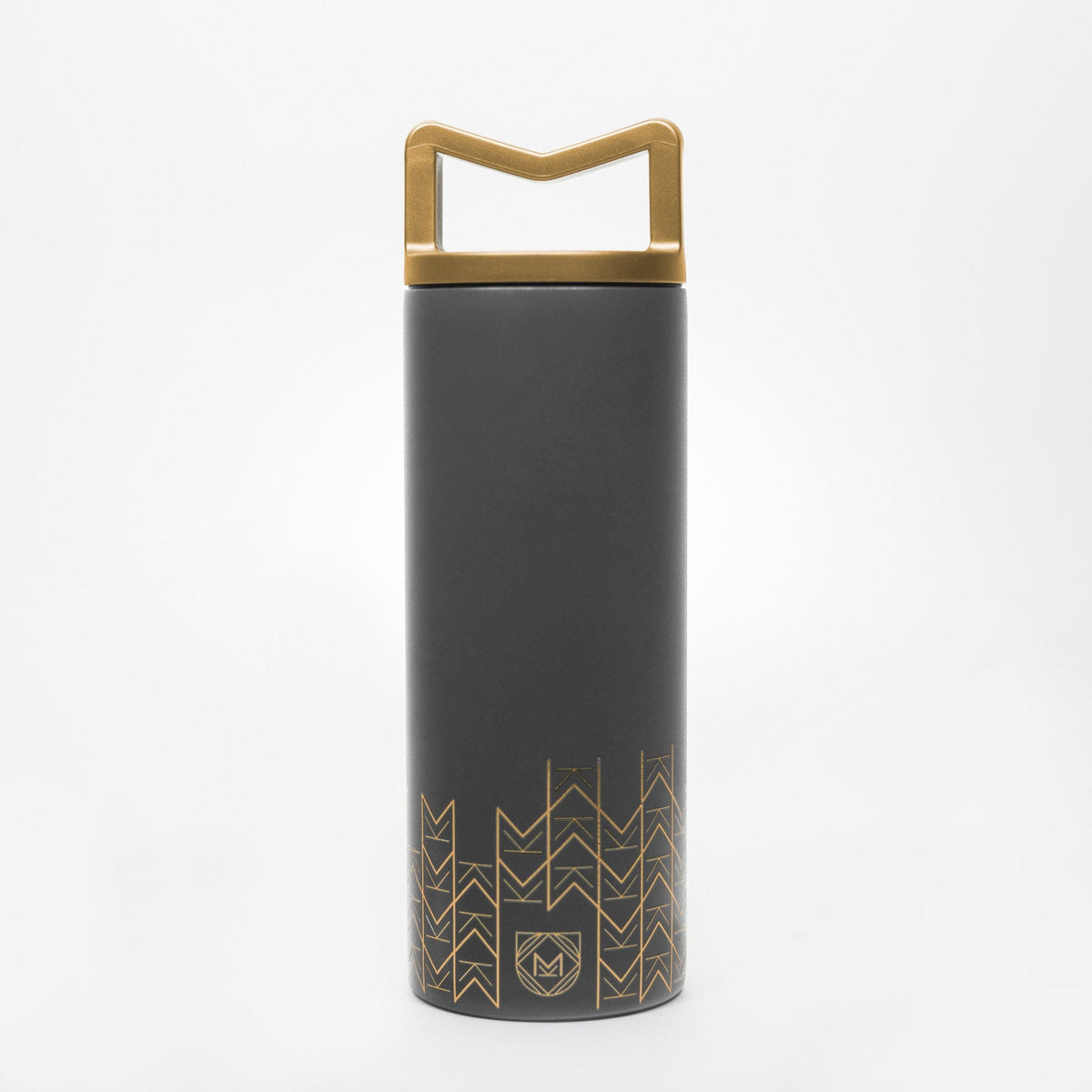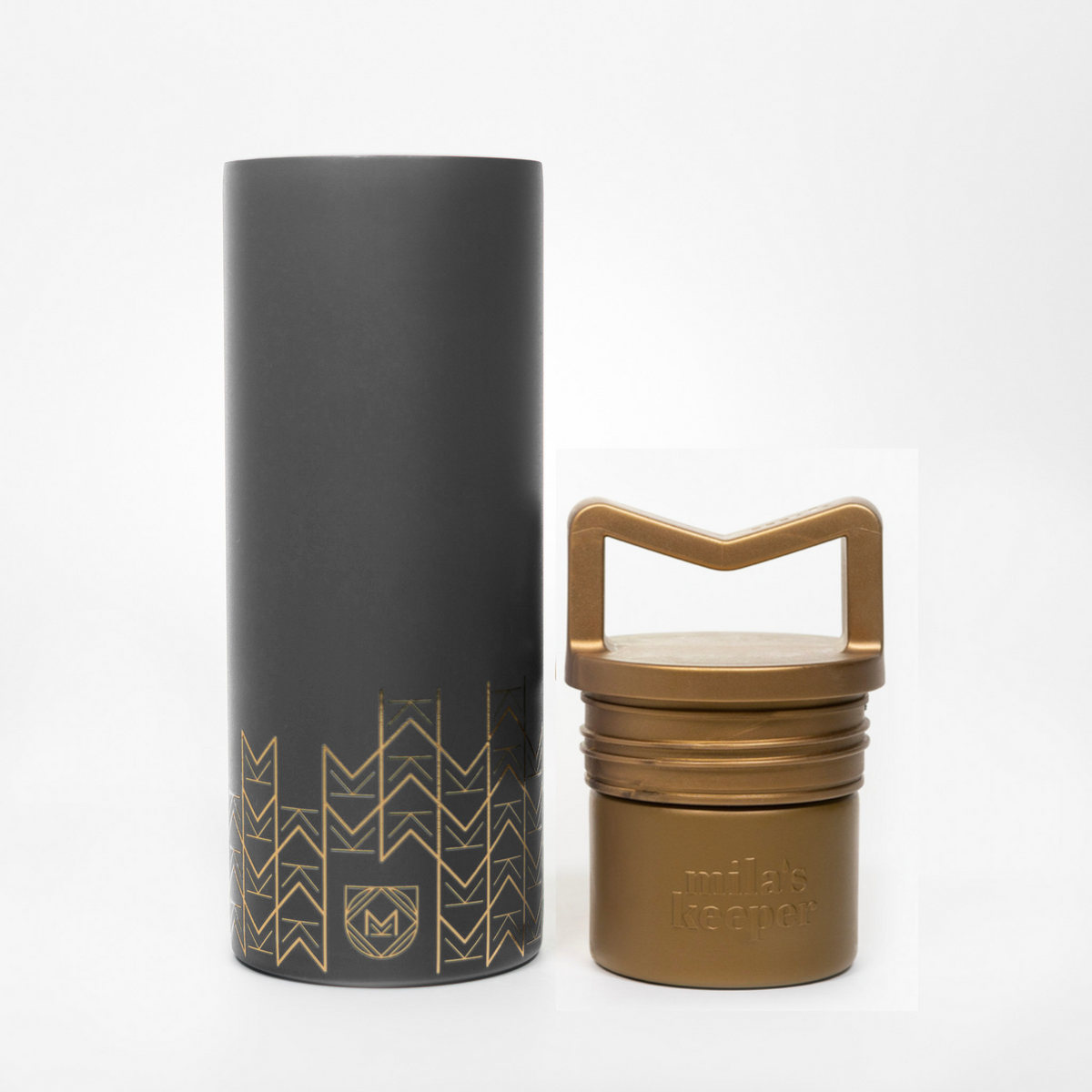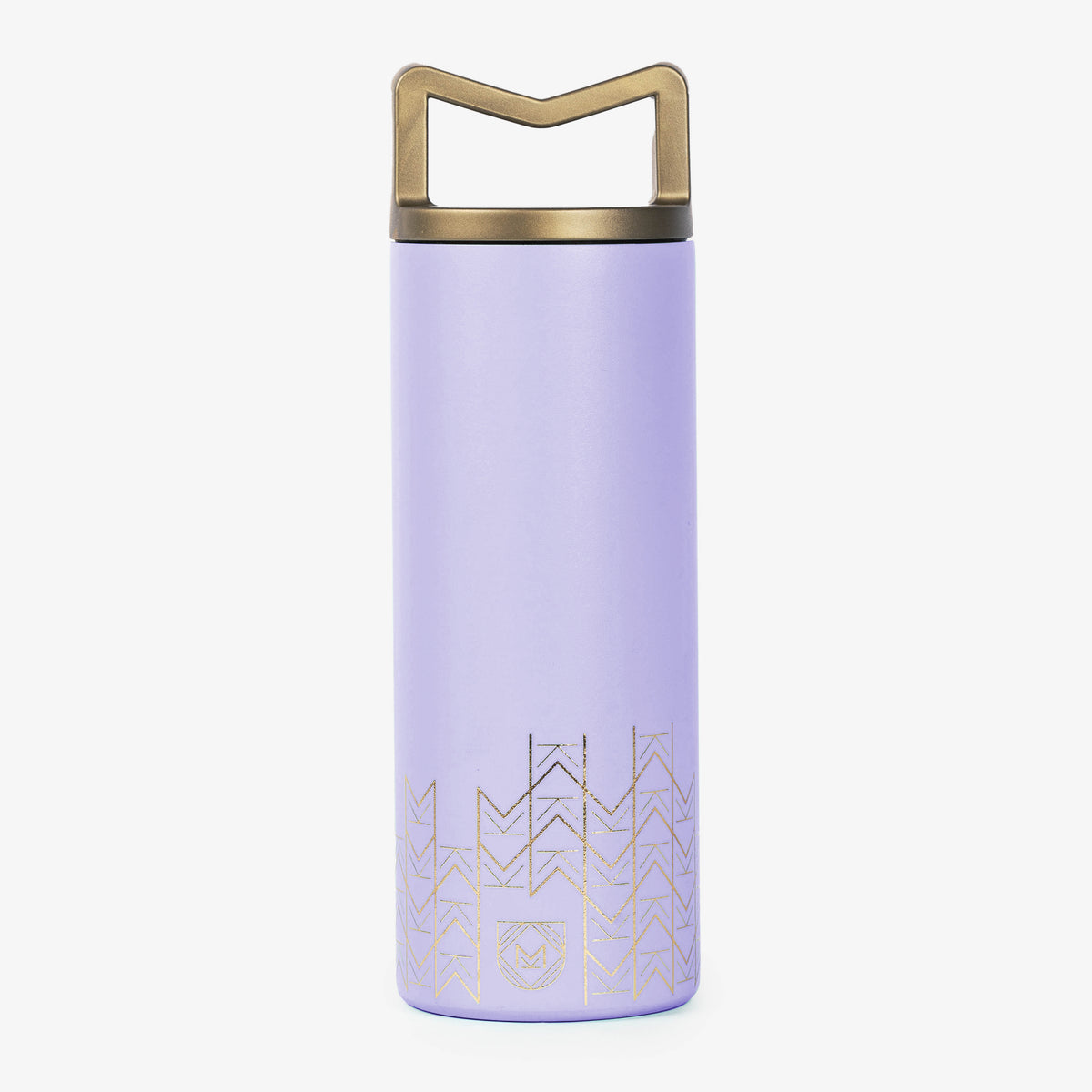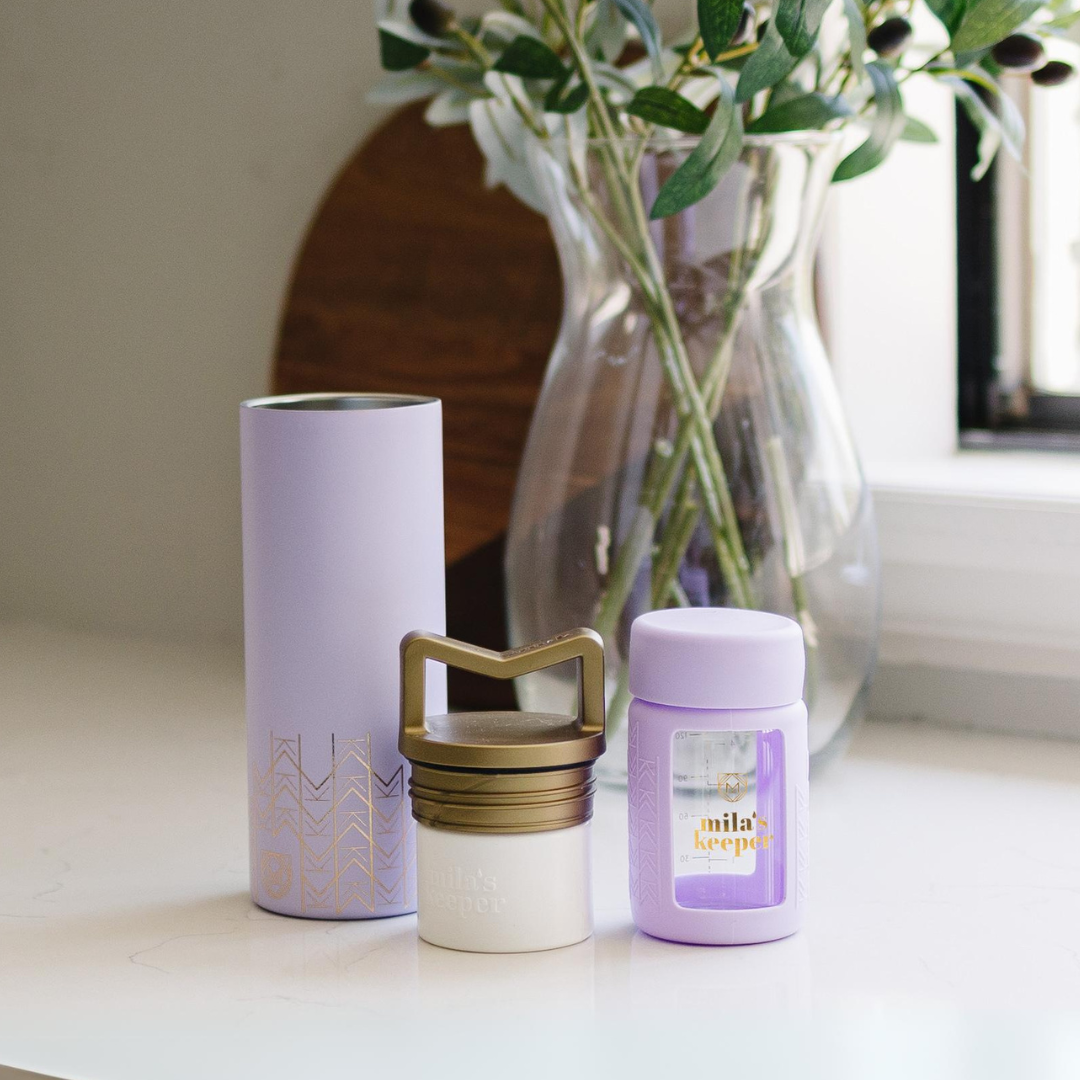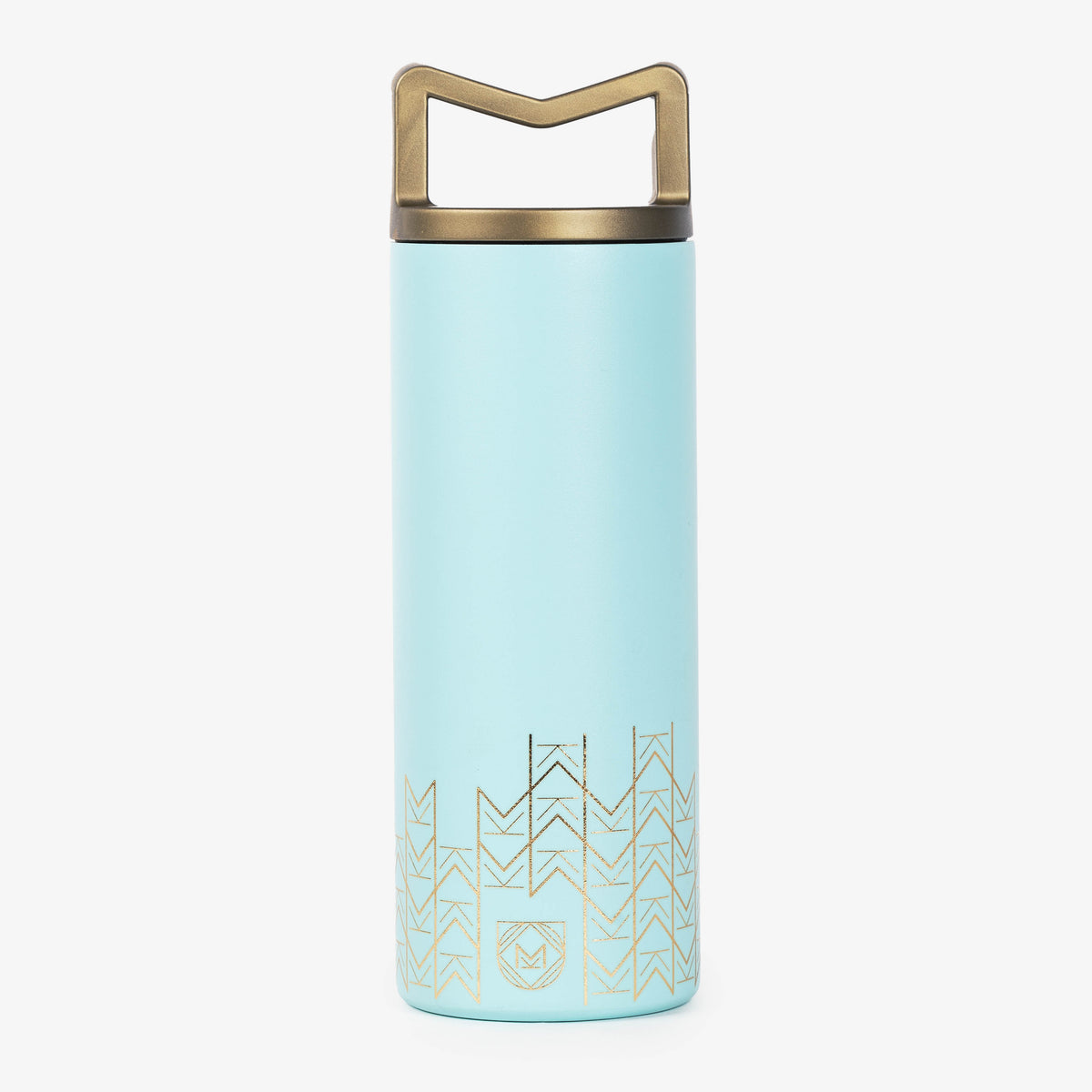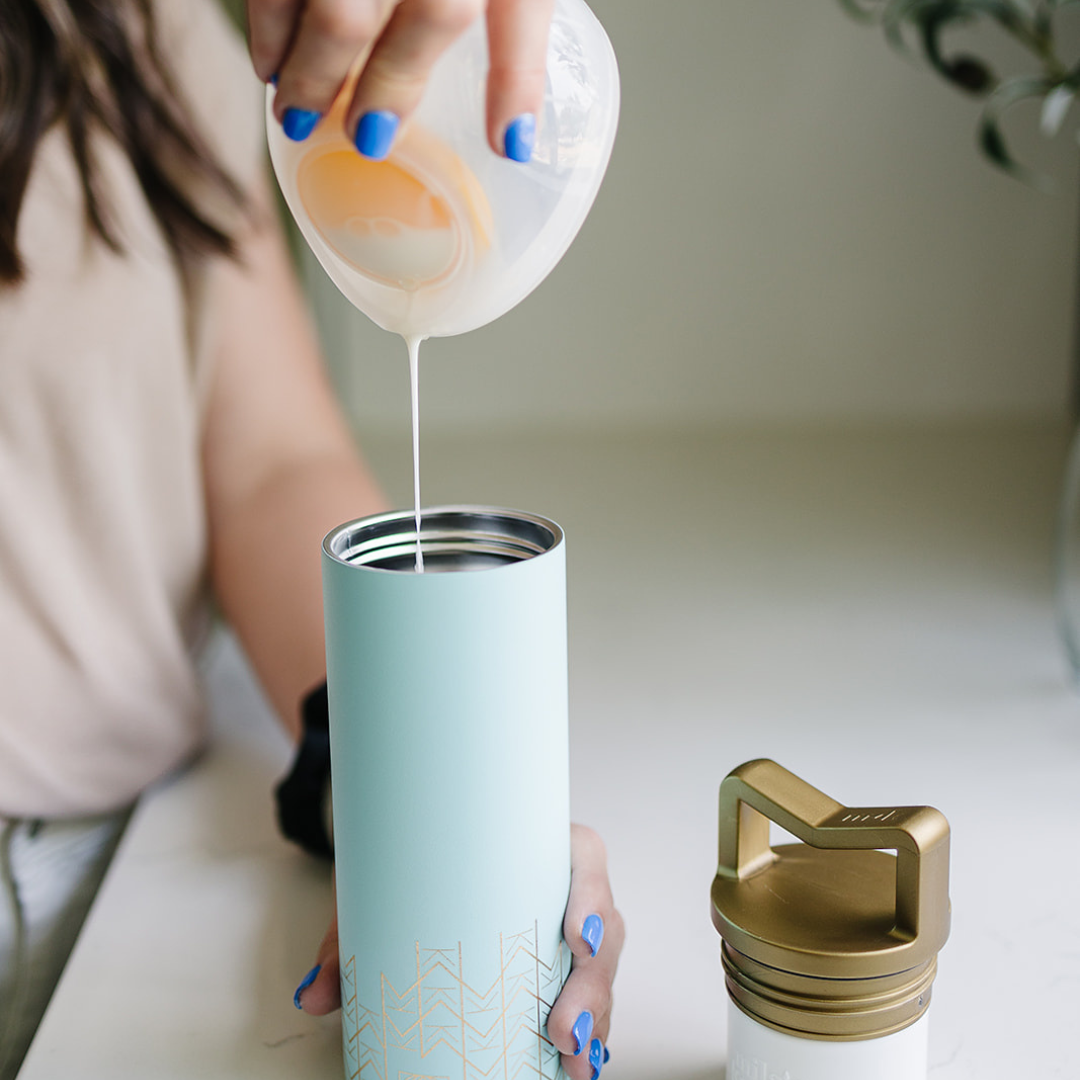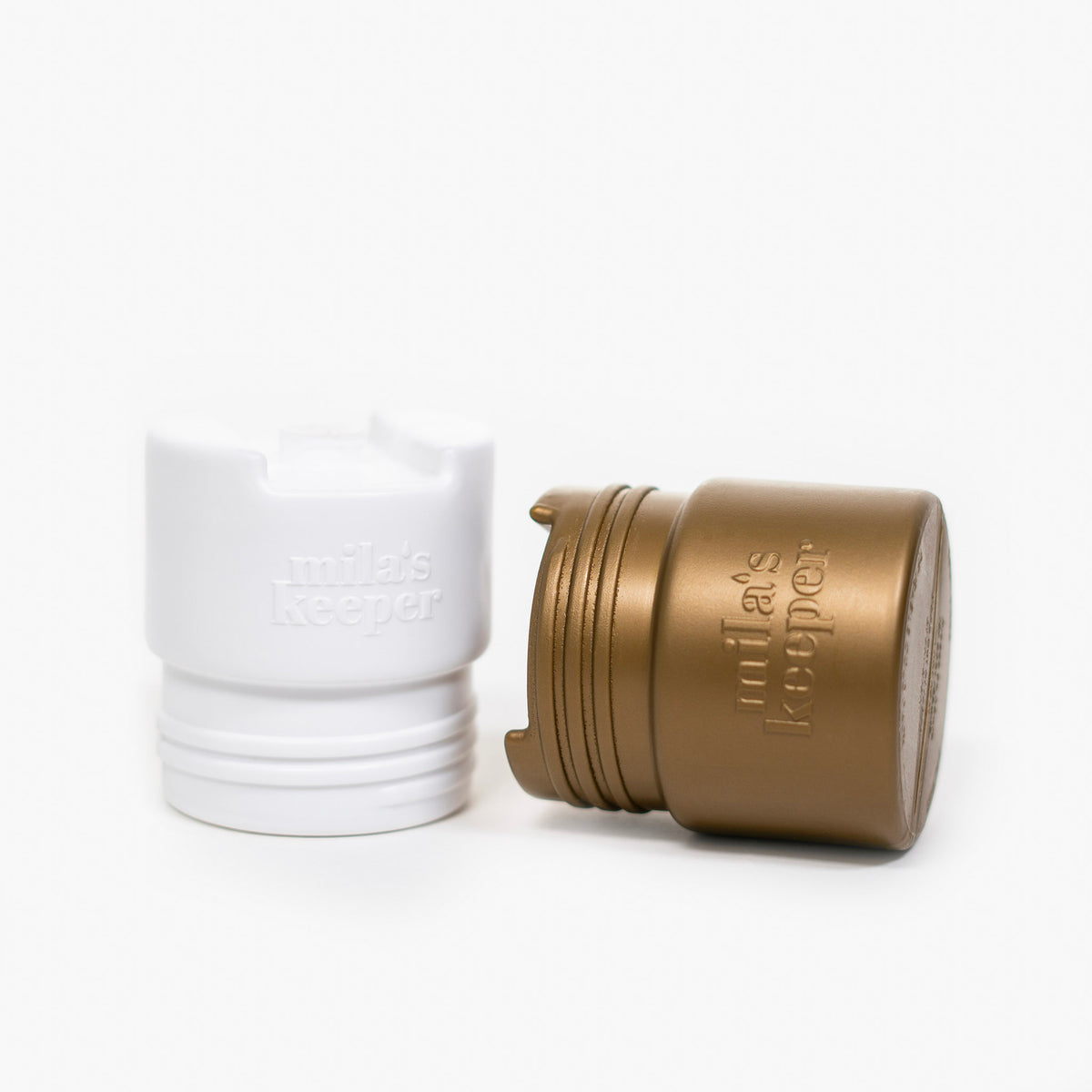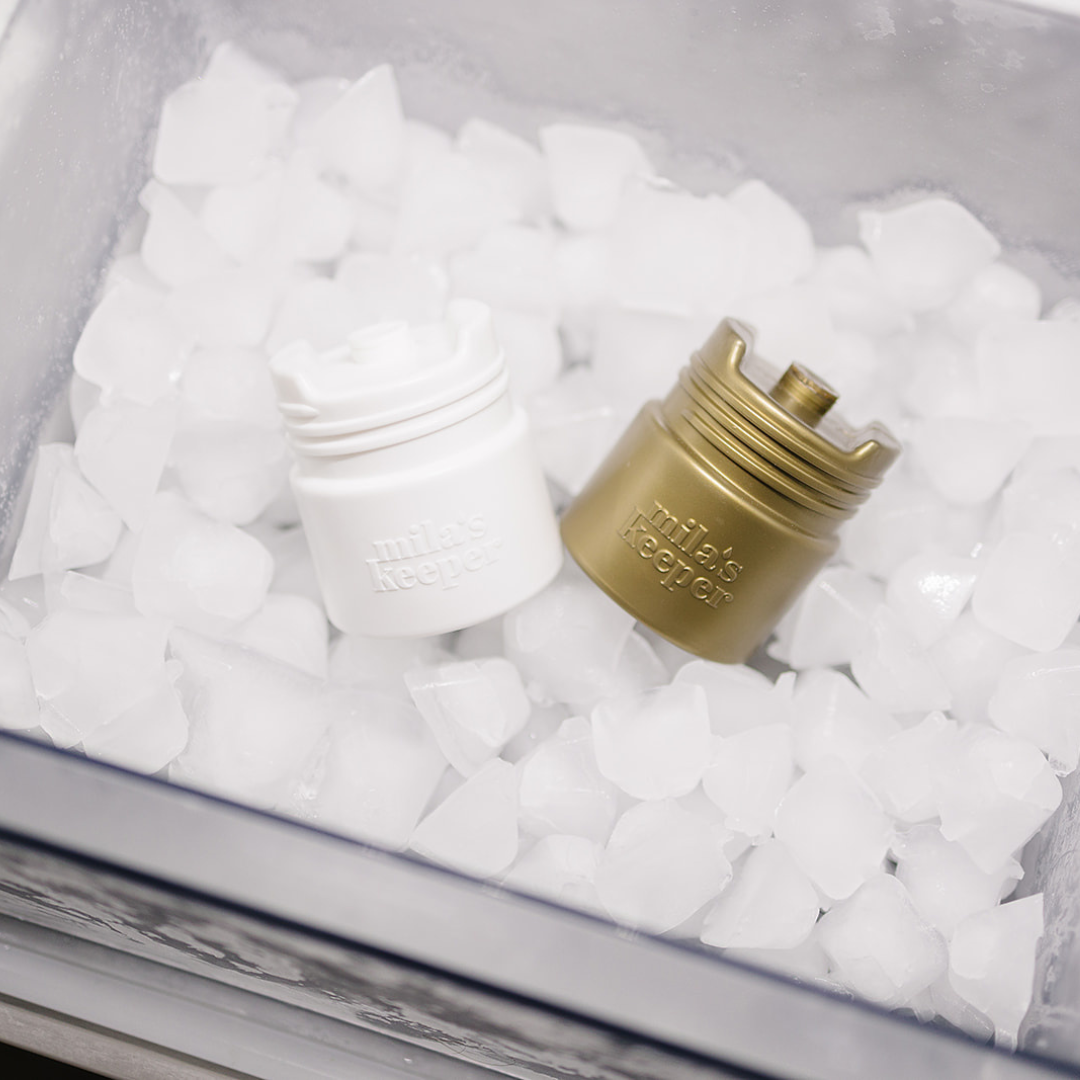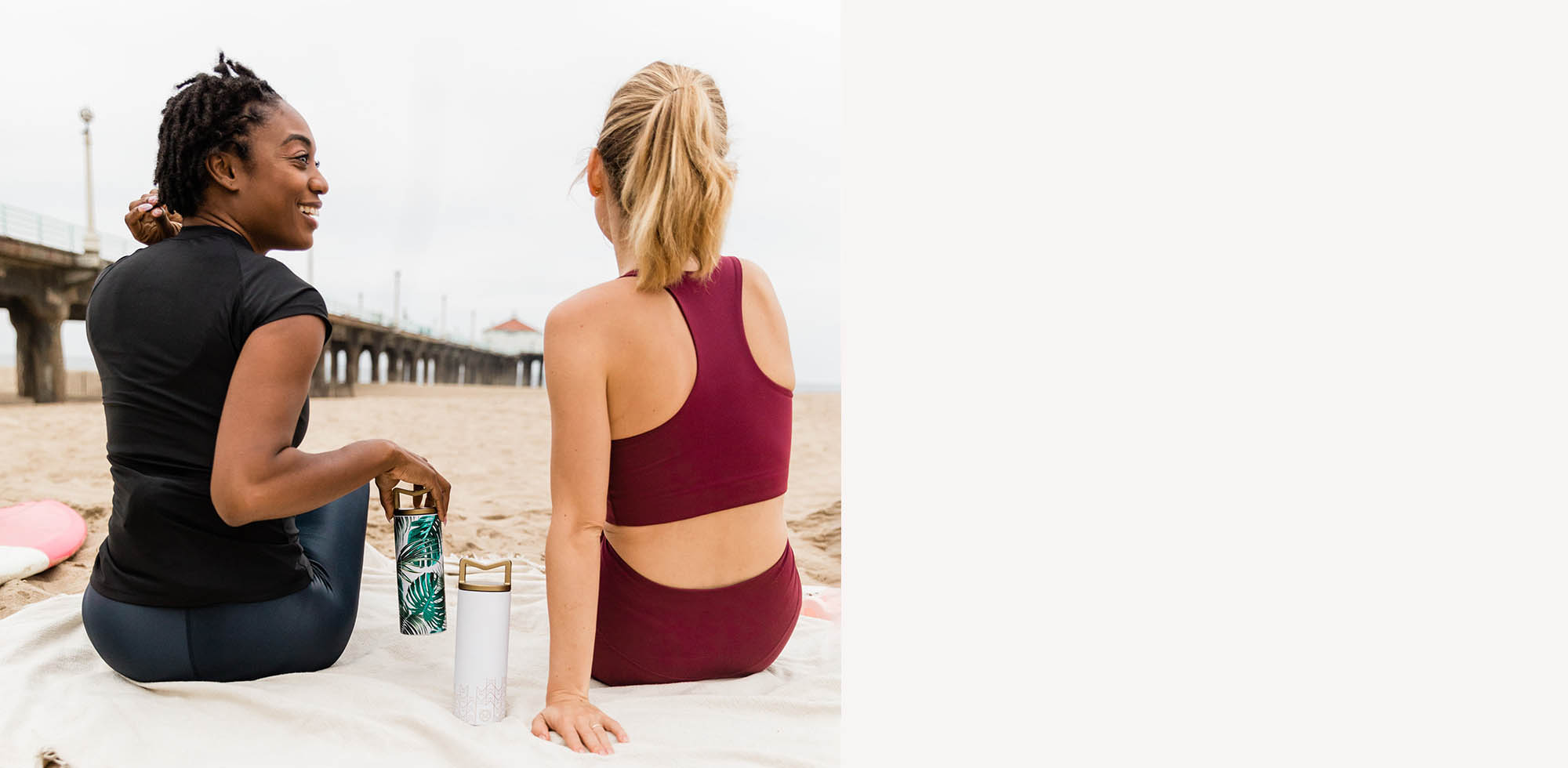Breast milk is a remarkable source of nourishment for babies, providing vital nutrients and immune-boosting properties. Many nursing mothers choose to express and store their breast milk for various reasons, making breast milk storage a crucial aspect of their breastfeeding journey.
With so many breast milk storage options on the market, it can be overwhelming to choose the best one for your needs. This guide will provide you with all the information you need to know about breast milk storage containers, including how to use them, how to store them, and which containers are the best for your needs.

Breast Milk Storage Bags
Many busy mamas rely on stored, expressed milk to nourish their little ones when they aren’t able to breastfeed them. They’re able to provide their breast milk to their little ones hours, days or even months after they express their breast milk because of breast milk storage containers- making these containers very valuable tools in any breastfeeding mama's toolbox.
Breast milk storage bags are a great option for breastfeeding moms who want to store their milk for later use. They’re convenient, easy to use, and take up less space than traditional storage containers. Plus, they’re designed to keep your milk fresh and safe for your baby. Using breast milk storage bags can also help you build up a supply of milk, which can be important for moms who work outside of the home.
One of the biggest advantages of using breast milk storage bags is their convenience. They’re easy to use, with many bags featuring a pour spout or easy-to-seal zipper to prevent any spills. The bags are made from materials that are safe for storing breast milk and are designed to be leak-proof. They’re usually pre-sterilized, which can be a big time-saver for busy moms who are already juggling a lot.
They come in different sizes, so you can choose the one that best fits your needs, and they’re easy to label and keep organized. Breast milk storage bags can also be stored flat, which can be a big advantage if you don’t have an abundance of freezer space.
Storage bags are also often more affordable than other storage options, such as bottles or containers. This can be a big advantage for moms who are on a tight budget.
When it comes to storing breast milk in bags, there are a few important steps to follow. First, choose high-quality bags that are specifically designed for breast milk storage. These bags should be made from food-grade materials and should be leak-proof and durable.
Once you’ve pumped your milk, pour it into the bag, leaving some space at the top to allow for expansion during freezing. Squeeze out any excess air and seal the bag tightly. Then, label the bag with the date and time of pumping, as well as the amount of milk stored.
It’s also a good idea to store the bags in small batches, so that you can thaw only what you need. When it’s time to use the milk, be sure to thaw it properly by placing it in the refrigerator overnight or by running it under warm water or using a milk warmer. You can also use the MilKeeper, an insulated thermos designed for breast milk that will safely act as a milk warmer when using with hot water. Never use a microwave to thaw breast milk, as this can destroy important nutrients and increase the risk of hot spots that can burn your baby’s mouth.
Keep in mind though that not all storage bags are created equal, and some may not be as durable or reliable as others. As always, it’s important to do research and choose a reputable brand to ensure the safety and quality of the milk being stored.
While there are many advantages to using breast milk storage bags, there are also some disadvantages to consider. One of the biggest concerns is the potential for leaks or spills if the zipper fails. Since the storage bags are often stored laying down, milk could potentially spill out of the bags before it’s fully frozen, which can result in wasted breast milk- something nobody wants!
Additionally, some moms may find that the bags are not as durable as other storage options and are too flimsy when being handled. It can be difficult to transfer expressed milk to bags from bottles, and back to bottles from bags when it’s time for a feeding.
Another disadvantage of using breast milk storage bags is the potential for contamination. If the bags aren’t properly sterilized or if they’re reused, there’s a risk of bacteria growth and contamination of the breast milk. This can be especially concerning for premature or immunocompromised infants who are more susceptible to infections.
Some moms may find that storage bags aren’t as environmentally friendly as reusable containers, which can be a disadvantage for those who prioritize sustainability. Many bags are designed for single use only, which can create a lot of waste.
How Many Breast Milk Storage Bags Do I Need?
If a nursing mom uses 3-4 bags in a day, that's 1,095- 1,460 bags being disposed of in a year, which costs more than $360 on average a year (Lansinoh bags at $18/75 bags. More and more mamas are concerned about the environmental impact of using disposable storage bags, especially when there are perfectly good reusable containers on the market.

Alternatives to Breast Milk Bags
Breast milk bags are a popular choice for storing and transporting breast milk, but they may not be the best option for everyone. If you’re looking for a more eco-friendly option or simply want to try something different, there are several alternatives to breast milk bags available. The options range from reusable plastic containers, glass bottles, silicone storage bags, and pitchers to trays, with multiple choices for every option.
Milk Storage Bags vs. Other Options
Reusable containers are a great alternative to breast milk bags for pumping moms. They come in a variety of sizes and shapes and can be made from materials like glass or BPA-free plastic. According to La Leche League GB, hard-sided containers, either glass or plastic, do the best job of protecting your breastmilk. Some popular options include mason jars, food storage containers, and breast milk storage bottles with screw-on lids.
These containers aren’t only eco-friendly but are also cost-effective in the long run as they can be used multiple times and transitioned into other uses beyond storing breast milk.
Plastic bottles
First, let’s get into one of the more popular milk storage container options, the plastic bottle. Plastic bottles offer several advantages when it comes to breast milk storage. One of the primary benefits is their availability and affordability.
Plastic bottles can be found in most stores and pharmacies, making them easily accessible to new moms. They’re also relatively inexpensive, which can be beneficial for those on a tight budget. Plastic bottles are lightweight and easy to transport, making them suitable for on-the-go mothers.
Whether you’re heading to work, traveling, or simply going out for a few hours, plastic bottles are portable and fit easily into diaper bags or coolers. This convenience ensures that your baby can still receive the benefits of breast milk even when you’re away from home.
When using plastic bottles for breast milk storage, it’s important to choose bottles that are specifically designed for this purpose. Look for bottles that are made from BPA-free plastic, as this ensures that harmful chemicals will not leach into the breast milk. BPA (Bisphenol A) is a chemical that has been linked to various health concerns, so opting for BPA-free bottles is a safer choice for your baby.
Glass bottles and Non Toxic Breast Milk Storage
When it comes to storing breast milk, one option that is gaining popularity among nursing moms is the use of glass bottles. Glass bottles offer several advantages over plastic bottles, making them a compelling choice for those concerned about the potential risks associated with plastic.
One of the primary benefits of using glass bottles for breast milk storage is their non-toxic nature. Unlike some plastics that may contain harmful chemicals like BPA, glass is inert and doesn’t leach any chemicals into the breast milk. This is particularly important for the health and safety of the baby, as they are more vulnerable to the effects of harmful substances.
Glass bottles are also highly durable and long-lasting. They’re resistant to scratches and stains, ensuring that the bottles remain in excellent condition even after repeated use. Unlike plastic bottles, which may wear out over time, glass bottles can withstand frequent sterilization and high-temperature washing without degrading. This durability makes glass bottles a wise investment that can be used for multiple babies or even repurposed for other storage needs.
There are different types of glass that can be used for breast milk storage containers, but not all of them are of the same quality. The most commonly used types of glass are soda-lime glass, treated soda-lime glass, and borosilicate glass.
Soda-lime glass is the type of glass you probably drink out of most often. It’s commonly used in the beverage industry due to their low cost and ease of production. However, there are some limitations to using this type of glass, which may make it less ideal compared to other types of glass in certain situations. Soda-lime glass has relatively low thermal resistance compared to other types of glass, which means it can crack or shatter when exposed to sudden temperature changes. It’s also not as mechanically strong as some other types of glass. It may be more prone to breakage or damage when subjected to external stresses, impacts, or rough handling- not ideal if you’re using it around a baby.
Treated soda-lime glass is made with the same material as soda-lime glass, but is treated with sulfur during the annealing process, and may have a higher likelihood of chemical interaction with certain substances. While soda-lime glass is generally considered safe for most food and beverage applications, it may have a slightly higher risk of leaching or reacting with acidic or alkaline liquids. This could be a concern when using baby bottles to hold milk or formula.
Using borosilicate glass for breast milk storage containers offers several advantages over other types of glass or plastic containers. Borosilicate glass is a specialized type of glass that is known for its exceptional durability, thermal resistance, and safety. It can be more expensive to make and is less commonly available. It’s a great option for an all-in-one container that can be used for freezing breast milk and also for thawing and feeding.
Borosilicate glass is an excellent choice for maintaining the freshness and quality of breast milk. It’s impermeable to oxygen and moisture, providing a superior barrier that helps preserve the nutrients and immune-boosting properties of the milk. It’s even been said that breast milk loses fewer antibodies when you put it in glass bottles to freeze it, over other types of containers. Borosilicate glass bottles also don’t interact with the breast milk in any way, ensuring that its taste and nutritional value remain intact.
Another advantage of glass bottles is their ease of cleaning and sterilization. Glass is a non-porous material, making it less likely to retain odors or residue from previous uses. Glass bottles can be easily cleaned by hand or in a dishwasher, and they can be sterilized using boiling water, steam, or sterilizing solutions. This ease of maintenance ensures a hygienic environment for storing breast milk.
Glass bottles also offer a sustainable option for breast milk storage. Glass is a recyclable material, and using glass bottles helps reduce plastic waste. If environmental concerns are important to you, choosing glass bottles aligns with eco-friendly practices and contributes to a healthier planet for future generations.
Silicone storage bags
Another great alternative to breast milk bags for pumping moms is silicone storage bags. Using silicone breast milk containers offers several advantages for nursing moms. Silicone containers are flexible and often feature a collapsible design. This allows them to be easily folded or rolled up when not in use, saving storage space in your kitchen or diaper bag.
Silicone is a non-porous material, which means it doesn’t absorb odors, stains, or residues from breast milk. Silicone containers are also generally dishwasher-safe and easy to clean by hand. They don’t require extensive scrubbing or soaking to remove any residue, ensuring a hygienic environment for storing breast milk.
Silicone breast milk containers are also freezer safe, allowing you to store breast milk safely for longer periods, and they can even withstand the freezing and thawing process without any concerns of cracking or breakage.
Pitcher method
Some nursing mamas don’t need to worry about building up a frozen supply of breast milk, and will instead use their pumped milk within days. For moms that will just be storing milk in the refrigerator and using it up within a couple of days, the pitcher method is a great option. The pitcher method involves pouring freshly expressed milk into a designated pitcher or container (glass or plastic) that’s kept in the refrigerator before transferring it into individual bottles for feedings.
This method offers several advantages for nursing moms, including being a space and time saver. The pitcher method allows you to collect and store multiple pumping sessions of breast milk in one container, reducing the time and effort required for individual bottle or bag preparation. This can be particularly beneficial for moms who pump frequently or have a large milk supply.
By combining multiple pumping sessions into a single container, the pitcher method helps optimize storage space. Instead of storing numerous individual bottles or bags, you can store a larger volume of breast milk in one pitcher, maximizing the capacity of your refrigerator or freezer.
Breast milk trays
Breast milk trays are another great alternative to breast milk bags for pumping moms who want a more eco-friendly option. These trays are made of silicone and allow you to freeze breast milk in small, one-ounce (or so) portions.
Using trays is another good space-saving alternative to using plastic bags since they come with lids and can be stacked conveniently in the freezer. Once frozen, you can pop the breast milk out of the tray and store it in a container or bag if you want. If you have enough trays and can keep them stored there until you need to use them, you would just take the frozen cubes or sticks and put them in the bottle you use for feeding your little one and warm them up.
The trays can also be reused for other purposes once you’ve stopped nursing and no longer need to store breast milk. They can be used to store baby food if you’ll be making your own purees, making it easy to make a batch and freeze some for later use.

Best Practices for Breast Milk Storage
Proper storage of breast milk is crucial to ensure that it remains safe and nutritious for your baby. When storing breast milk, it's important to always wash your hands and use clean, sterile containers, whether it be breast milk storage bags, glass bottles, or silicone bags.
According to the Centers for Disease Control and Prevention (CDC), you want to use a food-grade container for storing expressed breast milk. You also want to avoid bottles with the recycle symbol number 7, which indicates that the container may be made of a BPA-containing plastic.
Always label your containers with the date and time the milk was expressed, and store them in the back of the freezer where the temperature is most consistent.
Breast milk can be stored in the refrigerator for up to four days, or in the freezer for six to twelve months. When you’re storing breast milk in the freezer, don’t fill the container up all the way to the top. You want to leave a little room at the top because breast milk expands a little when it’s frozen.
Thawing and warming breast milk can be a delicate process, as overheating can destroy some of the nutrients and antibodies in the milk. The best way to thaw frozen breast milk is to place it in the refrigerator overnight. If you need to thaw it more quickly, you can place the bag in a bowl of warm water, or hold it under running warm water. Never use a microwave to thaw breast milk, as this can create hot spots that can burn your baby's mouth.
Use the oldest milk that you have stored first to prevent waste, and discard any breast milk that has been left out at room temperature for more than 4 hours, in the refrigerator for more than 4 days, or in the freezer for more than 12 months.

Modern Alternatives to Breast Milk Storage Bags from Mila’s Keeper
When deciding between milk storage bags and bottles for breastfeeding, there are several factors to consider. First, consider your storage space and how much milk you plan to store. If you have limited freezer space, bags may be a better option as they take up less space. However, if you plan to store a large amount of milk, bottles may be more practical.
Additionally, consider your budget and how often you plan to use the storage containers. Bags are typically less expensive than bottles, but if you plan to reuse the containers frequently, bottles may be a better investment.
Finally, consider your personal preferences and ease of use. Some moms find bags easier to fill and store, while others prefer the convenience of bottles. Silicone bags and trays are newer options for breast milk storage, but as they gain in popularity, more moms might find that they work better.
Here at Mila’s Keeper, we think that glass bottles make excellent storage containers for breast milk. We’ve created a system that allows busy mamas to easily pump on the go into our convenient glass bottles that fit directly into our insulated breast milk coolers where it will stay cool until they can either pop a nipple on it for a feeding or store it in the refrigerator or freezer for later use. Milk that has been frozen or refrigerated can remain in the glass bottle while it’s thawed and then used for feeding.
Another great thing about using glass bottles for breast milk storage is that they can be repurposed for many other uses when you no longer need to express breast milk. Glass bottles with silicone covers are the perfect little containers for carrying around snacks for your little one, or even transitioning to a cow or nut milk carrier- keeping it at the perfect temperature when stored in our breast milk cooler.
Whatever container you decide to use for storing breast milk, we know that you’ve done your research and made the best decision for you and your family. Different storage options meet different families’ needs. We’re happy that there are a variety of options to choose from, and are grateful to be part of this wonderful network that helps mamas provide nutritious breast milk to their babies!
Keep Reading related blog: 10 Facts About the Dangers of Plastic to Moms and Babies
--
A female-designed and female-run company, Mila's Keeper is on a mission to empower women to thrive during their breastfeeding journey by offering reusable, eco-friendly breast milk storage solutions for their day-to-day needs. Get the latest tips and info on Mila's Keeper products by following us on Facebook, Twitter, Instagram, Pinterest, and LinkedIn.

